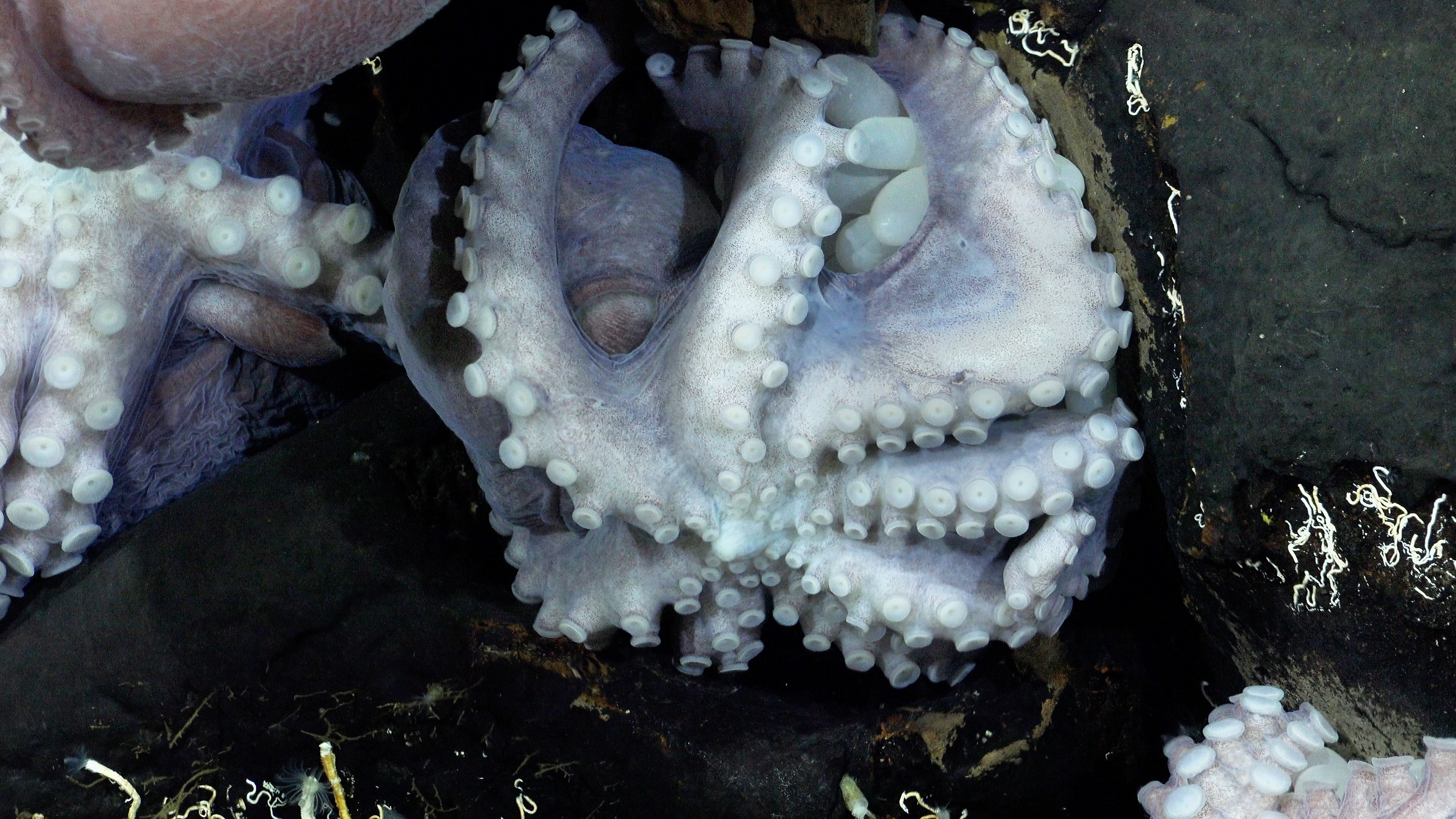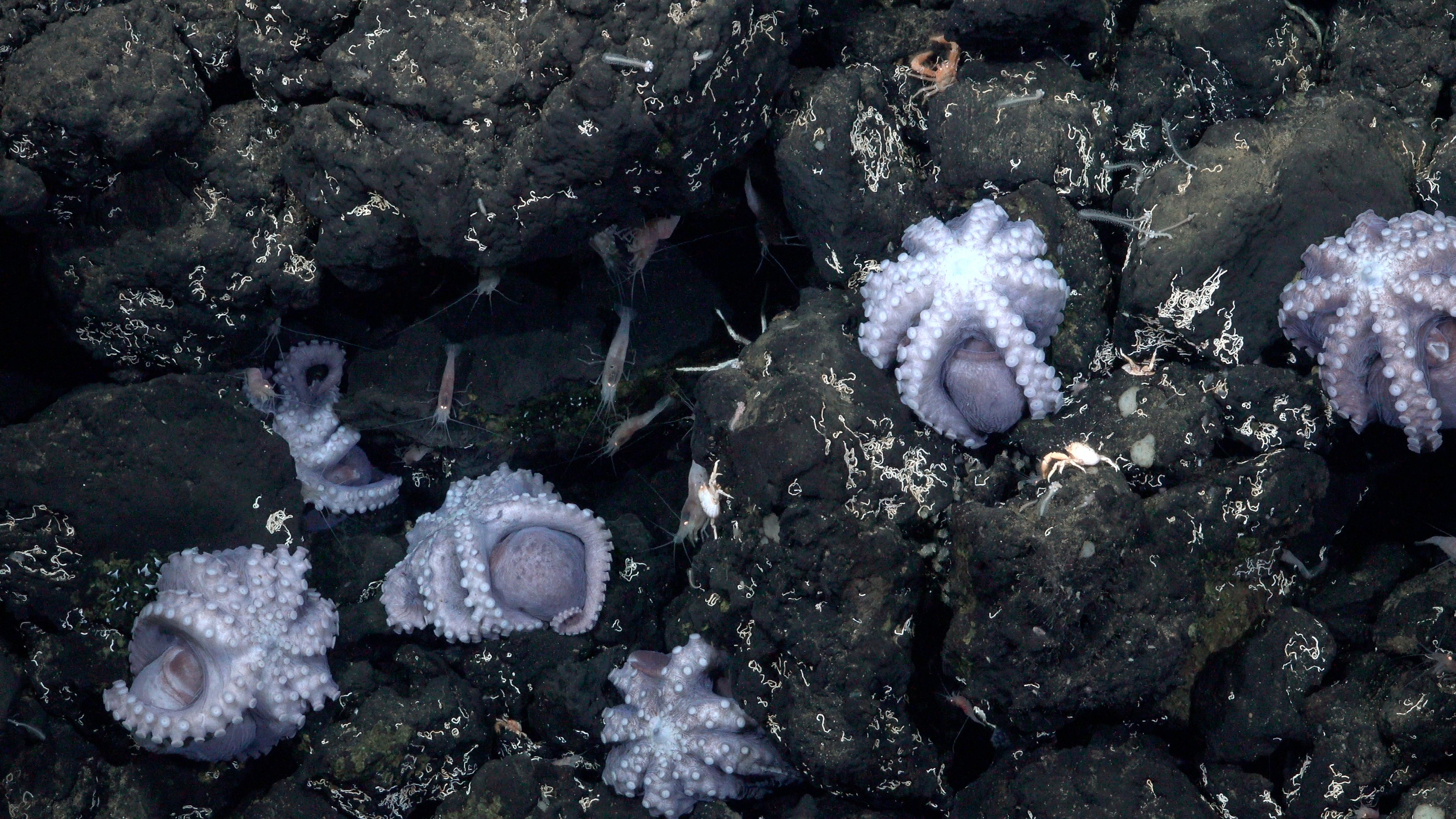Elated researchers watched baby octopuses hatch en masse near Pacific Ocean hydrothermal vents
Thank you for reading this post, don't forget to subscribe!
The brooding grounds were discovered serendipitously in 2013 when scientists set out to explore an underwater rock formation called the Dorado Outcrop—an area about the size of a soccer field located 135 miles west of Costa Rica and 10,000 feet beneath the surface. They had only been looking to confirm that hydrothermal fluids were seeping out of the vents, and they were surprised to find the warm water populated by an unknown species of octopus of the genus Muusoctopus incubating eggs.

This behavior seemed strange because the octopuses were found in an area that is nearly 20 degrees Fahrenheit warmer than the surrounding waters. That may not sound like much because humans are regularly exposed to wide temperature swings, but deep-sea octopuses spend nearly their entire life in chilly waters that vary little in temperature. The team thought it was surely too hot near the vents to yield viable young, and indeed, they saw no embryos within the eggs.
But when scientists returned last month onboard the nonprofit Schmidt Ocean Institute’s research vessel Falkor (too), they not only saw promising embryos but witnessed baby octopuses actually emerging from eggs. Watching through cameras on a remotely operated underwater vehicle, the team witnessed the brooding grounds transform into an active and thriving octopus nursery in real time. The spectacle has opened up a whole new realm of questions.
“The warm fluids seeping out of Earth’s crust here could speed up the gestational process,” Orcutt says. “And it may just be this species that has adapted to withstand the heat while brooding to gain that advantage.”
The Dorado Outcrop is home to more than 100 octopus mothers, a scattering of male would-be suitors and shrimp and eels on the lookout for a chance to snatch an egg or newborn octopus. It also hosts strange creatures, such as glass sponges and isopods—translucent, alien-looking animals that have inhabited Earth for hundreds of millions of years.

The team has already identified another deep-sea octopus nursery on a nearby outcrop, which is only the third one to be found anywhere in the world. (There is also a deep-sea octopus nursery at the Davidson Seamount, about 80 miles off the coast of central California.) Additionally, the researchers found a potential new octopus species, separate from the brooding octopuses, though this could take months to confirm.
Investigating such an unexplored area is likely to turn up additional surprises. “Our focus is the octopus, but we’ve been collecting other specimens for specialists in other groups to study, too,” says the expedition’s other co-leader, Jorge Cortés-Núñez, a professor emeritus of biology at the University of Costa Rica.
No one yet knows how long it takes for these octopus eggs to hatch, but it is likely several years. That’s a long time, considering how vulnerable the mothers and eggs are while brooding. “We’re eager to find out how common these octopus nurseries are, partly to see whether there should be special protections in place at the Dorado Outcrop,” Cortés-Núñez says. Scientists and lawyers in Costa Rica plan to propose designating the Dorado Outcrop, along with various other deep regions, as marine protected areas; this would help preserve them and maintain the benefits they offer to the surrounding ecosystem, such as providing a habitat for deep-sea species.
But even if the area were shielded from direct human threats, its inhabitants could still be harmed by climate change. Warming ocean waters and reduced oxygen levels could put too much strain on deep-sea organisms, which usually spend nearly all of their lives in frigid, unchanging conditions. “If even a few organisms are unable to thrive in alternate conditions, there could be wide-reaching consequences to ecosystem dynamics,” says Anne Hartwell, a Ph.D. candidate at the University of New Hampshire, who was not involved in the expedition but wrote a 2018 paper about the brooding octopuses at the Dorado Outcrop.
Hartwell says this exciting discovery of successful octopus reproduction underscores how much more remains to be uncovered about the ocean and its inhabitants. “There is a sea of knowledge to be learned about deep-sea biodiversity and ecology,” she adds.
ABOUT THE AUTHOR(S)
Ashley Balzer Vigil writes about astrophysics for NASA’s Goddard Space Flight Center by day and moonlights as a freelance environmental writer. Follow Ashley Balzer Vigil on Twitter

